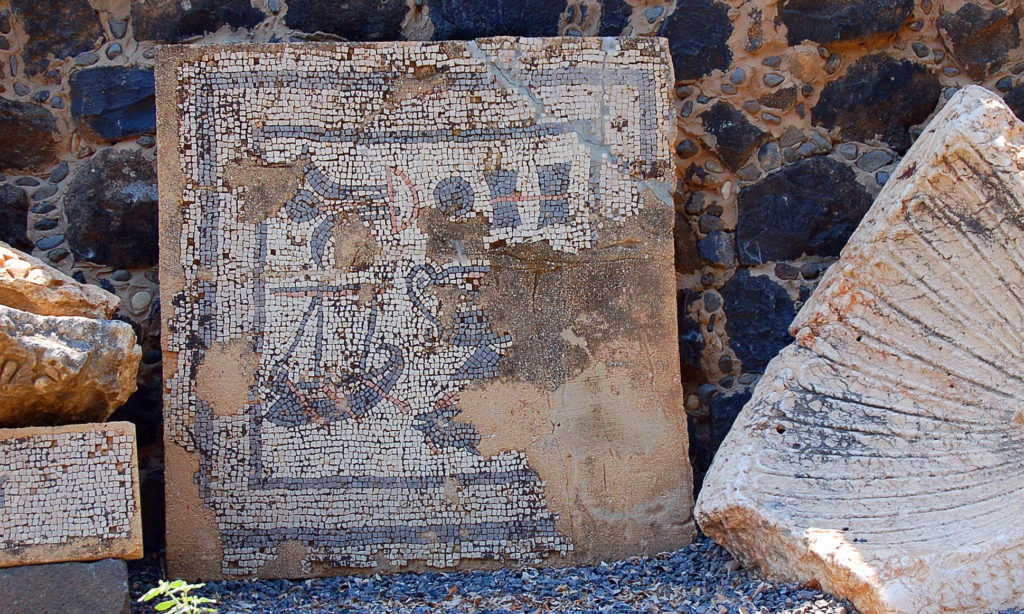
According to the Christian New Testament, Jesus spent a lot of time on a boat. Visitors to Israel can now see how that boat looked.
At the time of Jesus, a number of fishing villages lay along the shore of the Sea of Galilee. Magdala, the home of Mary Magdalene, was along the west side. Capernaum, the center of Jesus’ ministry, was on the northwest corner. Bethsaida, where Jesus fed the 5000, wason the north side. Jesus and his disciples traveled between these and other waterfront villages byboat. Although some of Jesus’ most famous miracles, including walking on water, calming the waves and helping his disciples catch fish, occurred in connection with these boats, the New Testament does not describe them and, until recently, there was no physical evidence about their size or appearance. That changed in the 1970s, when excavations at Magdala uncovered a mosaic in a first century house. That mosaic, now on display at the excavated ruins of Capernaum, illustrates a fishing boat having a sailing mast, two pairs of oars for propulsion and an oar near the rear for steering. In 1986, two brothers living along the Sea of Galilee discoveredthe long-buried remains of the hull of just such a boat, visible in the mud during a severe drought. Archaeologists carefully removed and preserved the hull, which testing showed had been in use around the first century A.D. The hull, composed primarily of cedar planks, is 27 feet long and 7.5 feet wide, with a preserved height of 4.3 feet. The flat hull allowed the boat to get very close to shore. The so-called “Jesus Boat” is now on display in the climatized Yigal Alon Museum in Ginosar, a kibbutz along the western shore of the Sea of Galilee that is home to the men who found it.